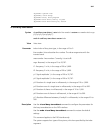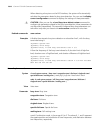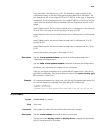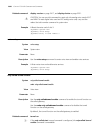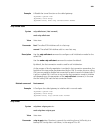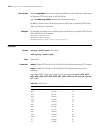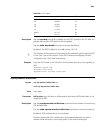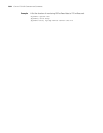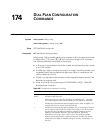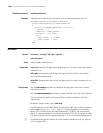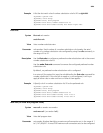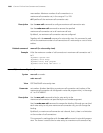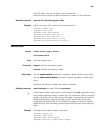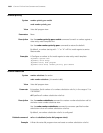
174
DIAL PLAN CONFIGURATION
COMMANDS
caller-permit
Syntax caller-permit calling-string
undo caller-permit { calling-string | all }
View POTS/VoIP/VoFR entity view
Parameter all: Specifies all calling numbers.
calling-string: Calling number permitted to originate a call to the local voice entity,
in the format of { [ + ] string [ $ ]}| $, with a maximum length of 32 characters.
The following describes the symbols in the format:
■ +: Plus sign. It comes before the whole number and indicates that the number
is an E.164 number.
■ $: Dollar sign. When it comes at the end of a number, the calling number must
completely match the part before the dollar sign. When it comes alone, the
calling number can be null.
■ If there is no sign behind the number, number segments beginning with it are
permitted to originate calls.
■ string: A character string consisting of 0123456789#*.!+%[]()-. Table 685
describes these characters.
Table 685 Description of characters in a string
Character Meaning
0-9 Digits 0 through 9
# and * Indicates a valid digit each
. Wildcard, which can match any valid digit. For example, 555.... can match
any number beginning with 555 and ending in four additional characters.
! Indicates the sub-expression before it appears once or does not appear. For
example, 56!1234 can match 51234 and 561234.
+ Indicates the sub-expression before it appears one or more times. If the plus
sign (+) appears at the head of a number, the number is an E.164 number
and the plus sign itself does not represent a specific number or number
repetition. For example, 9876(54)+ can match 987654, 98765454,
9876545454, and so on, and +110022 is an E.164-compliant number.
- Hyphen (connecting element), used to connect two numbers (The smaller
comes before the larger) to indicate a range of numbers, for example, 1-9
inclusive.



